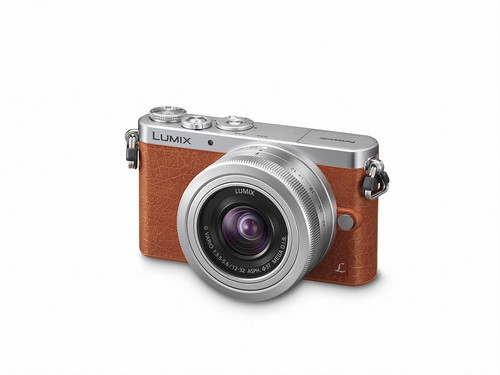
When it comes to small micro four-thirds cameras, the usual go-to brand for many photographers is Olympus. Well, that is about to be changed with the new Panasonic Lumix GM series.
Using the same hardware as the professional-focused Lumix DMC-GX7, Panasonic has managed to shrink the new Lumix DMC-GM1 down to the size of a small notebook – perfect for avid shutterbugs who like to shoot on the go without bringing a heavier camera.
This is done by cutting down on parts used – the magnesium alloy body allows the sensor to be bolted directly onto it. Magnesium alloy also provides sturdier construction and a more premium feel. On aesthetics alone, the new DMC-GM1 is one of the best looking, if not the best looking, in the market.
The camera’s 16-meg Digital Live CMOS sensor is matched with Panasonic’s new Lumix G Vario 12-32mm, f3.5-5.6 lens that is encased in a compact metallic design that enables it to be retracted for easy storage into bags or even jackets.
Sporting a focal range of 12-32mm (equivalent to 24-64 mm on a 35mm camera), the wide-to-medium zoom lens is useful for most shooting situations.

Shot hand held, with the focus on the word ‘Lumix’. Very pleasant bokeh effect from the kit lens.
I managed to test drive this beauty at Panasonic’s Singapore launch last week and found the camera’s full manual controls quite useful.
However, as you’d expect from the small body, the camera may prove a challenge for those with big hands – you might want to purchase an optional hand-grip.
Navigating through the camera can be tough too, for those with pudgy fingers. Thankfully, a handy ‘Q’ button gives access to the quick settings menu. A touch-enabled rear view screen also makes changing the settings much less painful.
Casual shooters can look to various pre-set modes including art filters and the new advanced iA+ automatic mode. For advanced users who like better control of the camera, you can switch to full manual mode.
The image quality from micro four-thirds sensors has improved very much over the years. Coupled with a very fast contrast autofocus system, the DMC-GM1 is a breeze to use even in low light situations, such as the interior of the Arts Science Museum where the camera was launched.
As there was a fashion show to test the camera with, I quickly put the camera on Auto ISO and engaged the continuous shooting mode to shoot the models while they were posing and moving around the stage.
At times, there was some shutter lag as the camera struggled to store the images quickly into the memory card. Fortunately, I still managed to bag some nice shots from the DMC-GM1.

Nothing but the stage light illuminating the model with good ISO noise control.

The pop up flash does the trick when you need a bit more light.

Denise Keller playing host during her lighter moments. The DMC-GM1 enables quick capture for that decisive moment.

The focusing is fast in helping to capture the lighter side of Denise.

Induced bokeh shot of the Christmas tree at The Fullerton Bay Hotel

Sunset shot of the Marina Bay Sands

Shot handheld and by propping the camera on the ledge to capture the light show.
For someone who doesn’t like art filters, I actually am intrigued by the rough monochrome filter effect on the DMC-GM1. The special black-and-white photo filter gives a very edgy look to the pictures, similar to the highly sensitive monochrome film of yesteryear. The result is quite outstanding, though personally, I would still shoot in colour and post edit with an image editor instead.


Like many trendy cameras these days, the DMC-GM1 comes in stylish black, traditional silver, noble white and classical orange. It’s out in Singapore in the first half of December, which means any time now, for S$999.
If you can wait a little, the Leica Summilux 17mm (34mm equivalent) f1.7 lens is out next year and that would be the perfect combination with the DMC-GM1 for street shooting.






